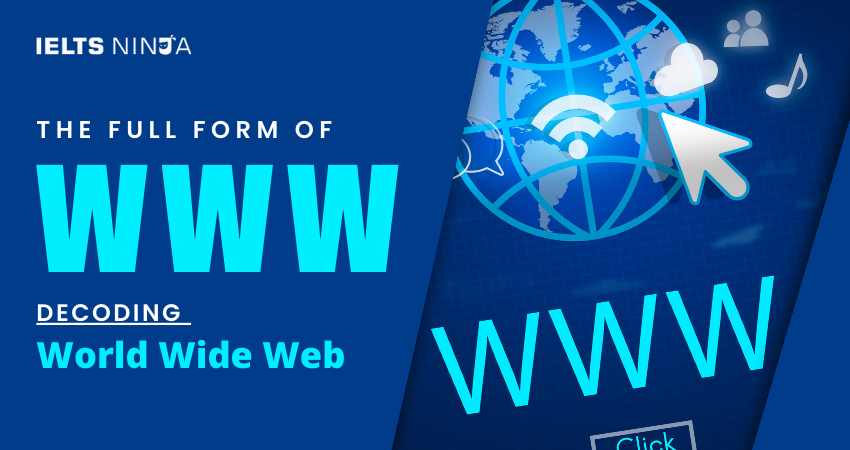The full form of WWW stands for the “World Wide Web”, और यह है a system of interconnected hypertext documents and multimedia content that is accessed via the internet using web browsers. The World Wide Web revolutionized the way information is accessed and shared, and it has become an integral part of modern life. In this guide, we will explore the details of the World Wide Web, its history, and its significance. The following are the key details of the World Wide Web (WWW):
WWWs Origin and History:
The concept of the World Wide Web was developed by British computer scientist Sir Tim Berners-Lee in 1989 while working at CERN, the European Particle Physics Laboratory.
The first website, http://info.cern.ch, was launched in 1991, marking the birth of the World Wide Web.
Components of the WWW:
- Web Pages: Web pages are individual documents containing text, images, videos, links, and other multimedia content. They are written in languages such as HTML (Hypertext Markup Language).
- Web Browsers: Web browsers are software applications that allow users to access and view web pages. Popular web browsers include Google Chrome, Mozilla Firefox, Microsoft Edge, and Safari.
- Web Servers: Web servers are computers that store and serve web pages to users when requested. Websites are hosted on web servers.
- URLs (Uniform Resource Locators): URLs are web addresses that help users locate and access specific web pages. They consist of a protocol (e.g., http:// or https://), domain name, and path.
- Hyperlinks: Hyperlinks, or simply links, are elements on web pages that allow users to navigate to other web pages by clicking on them.
Functionality of WWW:
- Hyperlinking: The fundamental feature of the WWW is hyperlinking, which allows users to move between web pages by clicking on links.
- Multimedia Content: The WWW supports a wide range of multimedia content, including text, images, videos, audio, and interactive elements.
- Search Engines: Search engines such as Google, Bing, and Yahoo enable users to search for specific information on the web by entering keywords.
- E-commerce: The WWW has revolutionized commerce by enabling online shopping and e-commerce platforms.
- Communication: Email, social media, and instant messaging services are integral parts of the WWW, facilitating global communication.
Impact and Significance of WWW:
- Global Information Access: The WWW provides access to an immense amount of information, making knowledge and resources available to people worldwide.
- Business and Commerce: It has transformed business models, enabling e-commerce, digital marketing, and global trade.
- Communication: Email and social media platforms have revolutionized communication, connecting people across the globe.
- शिक्षा: Online learning, e-books, and educational websites have expanded educational opportunities.
- Research and Innovation: The WWW has accelerated research, collaboration, and innovation in various fields.
यह भी पढ़ें: सर्वश्रेष्ठ ऑनलाइन आईईएलटीएस कोचिंग एवं प्रशिक्षण अकादमी
Challenges and Concerns – WWW:
- Privacy and Security: Concerns about data privacy, cybersecurity, and online threats are significant challenges associated with the WWW.
- Misinformation and Fake News: The ease of publishing content on the web has led to issues related to misinformation and fake news.
- Digital Divide: Access to the WWW is not uniform globally, leading to a digital divide between those with internet access and those without.
- Content Quality: While the WWW offers a vast amount of information, the quality and reliability of content vary widely.
Evolution – WWW:
The WWW continues to evolve with advancements such as Web 2.0, which emphasizes user-generated content and interactivity, and Web 3.0, which is characterized by semantic web technologies and increased machine-to-machine communication.
निष्कर्ष:
The World Wide Web (WWW) is a global system of interconnected web pages and multimedia content accessible via the internet. It has had a profound impact on how information is accessed, shared, and communicated worldwide. The WWW has transformed various aspects of society, including business, education, communication, and research, while also presenting challenges related to privacy, security, and information quality. As it continues to evolve, the WWW remains a central component of the digital age.








